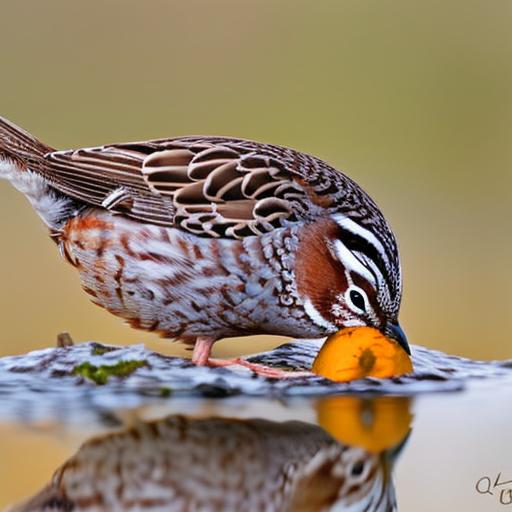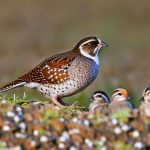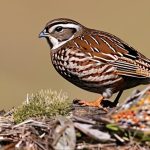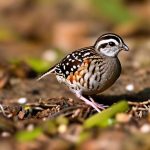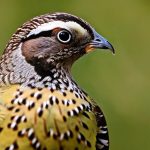Quail, like many other birds, have specific needs when it comes to surviving in cold weather. One of the most important needs is access to water. Quail need water not only for hydration, but also for maintaining their body temperature and for preening their feathers. In cold weather, it can be challenging for quail to find open water sources, as natural bodies of water may freeze over. This can lead to dehydration and even death if quail are unable to access water for an extended period of time. Additionally, quail need to consume more water in cold weather to help regulate their body temperature and stay warm. Understanding these needs is crucial for ensuring the health and well-being of quail during the winter months.
Quail also have specific behavioral adaptations to help them survive in cold weather. For example, they may fluff up their feathers to create insulating air pockets, or seek sheltered areas to avoid harsh winds and extreme temperatures. Understanding these behaviors can help quail owners provide the best possible care for their birds during the winter. By understanding the needs and behaviors of quail in cold weather, quail owners can take proactive measures to ensure that their birds have access to water and are able to stay warm and healthy throughout the winter months.
Key Takeaways
- Quail need access to unfrozen water in cold weather to stay hydrated and healthy
- Choose a water container that is easy for quail to access and clean
- Insulate the water container with materials like foam or insulation to prevent freezing
- Consider using heating elements like heated waterers or heated bases to keep water from freezing
- Implement a regular maintenance routine to ensure water containers are clean and functioning properly
- Provide alternative water sources such as water dishes or heated water bottles in case of freezing
- Monitor quail behavior and adjust water management as needed to ensure they have access to unfrozen water
Choosing the right water container for quail
When it comes to providing water for quail in cold weather, choosing the right water container is crucial. There are several factors to consider when selecting a water container for quail, including size, material, and design. The container should be large enough to provide an ample supply of water for the quail, especially since they will need to consume more water in cold weather. Additionally, the material of the container should be durable and able to withstand freezing temperatures without cracking or breaking. Plastic or metal containers are often good choices for quail water containers, as they are less likely to freeze and are easy to clean and maintain.
The design of the water container is also important. It should be shallow enough for quail to easily access the water, but deep enough to provide an adequate supply. Some quail owners prefer to use specialized poultry waterers with small cups or nipples that release water when pecked by the birds. These types of waterers can help prevent contamination and freezing, and can be a good option for quail in cold weather. Ultimately, the right water container for quail will depend on the specific needs and preferences of the quail owner, as well as the climate and conditions in which the birds are kept.
Insulating the water container to prevent freezing
In cold weather, one of the biggest challenges for quail owners is preventing their water containers from freezing. Insulating the water container can help keep the water from freezing and ensure that quail have access to a liquid water source at all times. There are several methods for insulating a water container, including using insulation materials such as foam or rubber, or placing the container in a sheltered area where it is less likely to be exposed to extreme temperatures and wind.
One effective method for insulating a water container is to use a specially designed insulated cover or jacket. These covers are made from materials such as neoprene or foam and are designed to fit snugly around the water container, providing an extra layer of insulation to help prevent freezing. Another option is to place the water container inside a larger insulated box or container, which can help protect it from freezing temperatures and harsh weather conditions. By insulating the water container, quail owners can help ensure that their birds have access to liquid water even in the coldest of temperatures.
Using heating elements to keep quail water from freezing
In extremely cold climates, using heating elements can be an effective way to keep quail water from freezing. There are several types of heating elements that can be used to prevent water containers from freezing, including heated waterers, heated bases, and heated rocks or pads. Heated waterers are specially designed containers that have built-in heating elements to keep the water from freezing. These can be a good option for quail owners in very cold climates, as they provide a reliable source of liquid water even in sub-zero temperatures.
Heated bases are another option for preventing water containers from freezing. These bases are placed underneath the water container and provide a constant source of heat to keep the water from freezing. They are often used in conjunction with traditional water containers and can be a good option for quail owners who want to provide extra protection against freezing temperatures. Additionally, heated rocks or pads can be placed inside or underneath the water container to provide localized heat and prevent freezing. These options can be especially useful for quail owners who want to provide targeted heat to specific areas of the water container.
Implementing a regular maintenance routine
Maintaining a regular maintenance routine is essential for ensuring that quail have access to clean, unfrozen water at all times. This routine should include checking the water container multiple times per day to ensure that it has not frozen over, and refilling it with fresh, clean water as needed. Additionally, any insulation materials or heating elements should be checked regularly to ensure that they are functioning properly and providing adequate protection against freezing temperatures.
In addition to regular checks and refills, it is important to clean the water container regularly to prevent contamination and ensure that the quail have access to clean, safe drinking water. This may involve emptying and scrubbing the container with a mild detergent, rinsing it thoroughly, and refilling it with fresh water. By implementing a regular maintenance routine, quail owners can help ensure that their birds have access to liquid water at all times and reduce the risk of dehydration and other health issues associated with cold weather.
Providing alternative water sources for quail
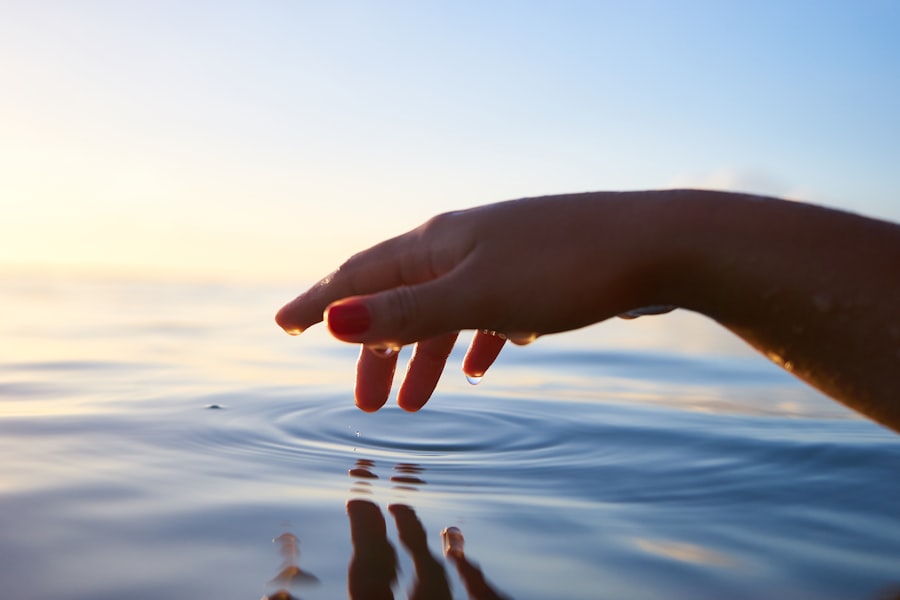
In addition to their primary water container, it can be beneficial to provide alternative water sources for quail in cold weather. This can help ensure that the birds have access to liquid water even if their primary container freezes over or becomes contaminated. One option is to provide shallow dishes or pans filled with fresh water in addition to the primary water container. These dishes can be placed in different areas of the quail enclosure to provide multiple sources of water for the birds.
Another alternative water source for quail is snow. In some cases, quail may consume snow as a source of hydration when liquid water is not readily available. However, it is important to monitor the birds closely if they are consuming snow, as it may not provide adequate hydration and could lead to dehydration if not supplemented with liquid water. By providing alternative water sources such as shallow dishes or pans and monitoring the birds’ behavior closely, quail owners can help ensure that their birds have access to liquid water even in cold weather.
Monitoring quail behavior and adjusting water management as needed
Finally, it is important for quail owners to monitor their birds’ behavior closely and adjust their water management strategies as needed. This may involve observing how often the quail are drinking from their water container, as well as monitoring their overall health and well-being. If quail are showing signs of dehydration or distress, such as lethargy or decreased activity, it may be necessary to adjust their water management strategies to ensure that they have access to an adequate supply of liquid water.
Additionally, monitoring the weather conditions and making adjustments accordingly can help ensure that quail have access to liquid water at all times. For example, if temperatures are expected to drop significantly overnight, it may be necessary to implement additional insulation or heating elements to prevent the water from freezing. By monitoring quail behavior and adjusting water management strategies as needed, quail owners can help ensure that their birds stay healthy and hydrated throughout the winter months.
In conclusion, understanding the needs of quail in cold weather is crucial for providing them with adequate access to liquid water and ensuring their health and well-being. Choosing the right water container, insulating it effectively, using heating elements when necessary, implementing a regular maintenance routine, providing alternative water sources, and monitoring quail behavior are all important aspects of managing quail water in cold weather. By taking these factors into consideration and implementing proactive measures, quail owners can help ensure that their birds have access to clean, unfrozen water at all times and stay healthy throughout the winter months.
If you’re looking for ways to keep your quail water from freezing during the winter months, you might also be interested in learning about the benefits of renting a chicken coop. Renting a chicken coop can be a convenient and cost-effective option for those who want to raise chickens but may not have the space or resources to build their own coop. Check out this insightful article on renting a chicken coop to discover how it can make poultry farming more accessible and enjoyable.
FAQs
What are some methods to keep quail water from freezing?
Some methods to keep quail water from freezing include using heated waterers, insulating the water containers, using heated bases, and adding a small amount of salt to the water.
What is a heated waterer and how does it work?
A heated waterer is a device that is designed to keep water from freezing by using a built-in heating element. It works by maintaining a constant temperature in the water to prevent it from freezing.
How can I insulate the water containers to prevent freezing?
You can insulate the water containers by wrapping them with insulation material such as foam or using a specially designed insulated waterer cover. This helps to retain the heat and prevent the water from freezing.
What are heated bases and how do they help prevent water from freezing?
Heated bases are devices that are placed underneath the water containers to provide a constant source of heat. They help prevent water from freezing by maintaining a warm temperature in the water containers.
Is it safe to add salt to quail water to prevent freezing?
Yes, it is safe to add a small amount of salt to quail water to help prevent freezing. Salt lowers the freezing point of water, making it less likely to freeze in cold temperatures. However, it is important to use a small amount to avoid harming the quail.
Meet Walter, the feathered-friend fanatic of Florida! Nestled in the sunshine state, Walter struts through life with his feathered companions, clucking his way to happiness. With a coop that’s fancier than a five-star hotel, he’s the Don Juan of the chicken world. When he’s not teaching his hens to do the cha-cha, you’ll find him in a heated debate with his prized rooster, Sir Clucks-a-Lot. Walter’s poultry passion is no yolk; he’s the sunny-side-up guy you never knew you needed in your flock of friends!

